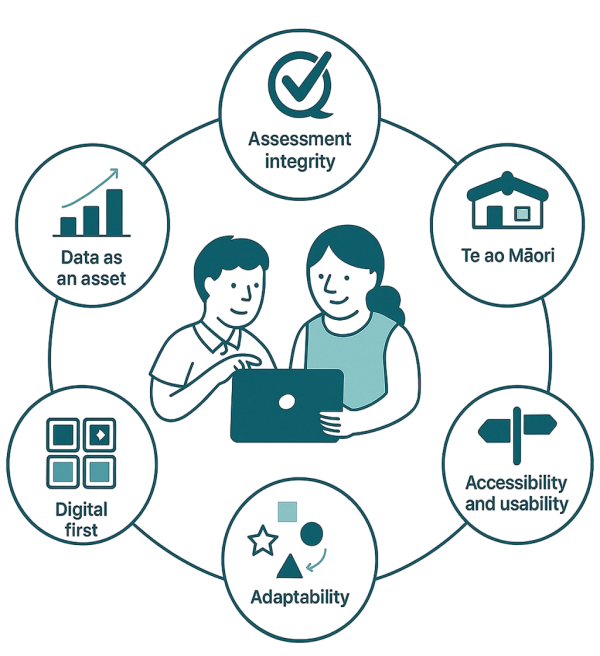Improving equity of NCEA outcomes
Twenty-first century assessment must contribute to addressing equity of NCEA outcomes by engaging students in new ways, stimulating changes in teaching and learning, and providing new ways for students to demonstrate their application of knowledge.
The key design principles for digital assessment
Kia noho takatū ki tō āmua ao: Qualify for the future world

Assessment integrity
Assessment enables credible, reliable and valid results and allows all students to authentically and securely display their application of knowledge, skills and abilities.
Te ao Māori
Assessments will enable students to use Te Reo Māori and Mātauranga Māori in their assessment, maintaining validity and contributing to equitable NCEA outcomes.
Data as an asset
Digital external assessment services enable analytics which can be used to better inform assessment development as well as teaching and learning.
Adaptability
Digital external assessment services evolve with student and school readiness and enable delivery modes and assessment types to develop in response to teaching and learning.
Accessibility and usability
The user experience for participants – students, examiners, markers, supervisors, teachers – is accessible and intuitive; the effort to participate will be no greater than under current arrangements.
Digital first
External digital assessment services are designed for end-to-end digital-first delivery.
Evaluating digital external assessment
Find more information on our research, and how we have evaluated the development of digital external assessment below.

